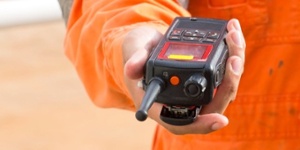For mission-critical and critical-infrastructure professionals, the ability to communicate is not optional. Lack of or reduced communications slows emergency response and system restoration activities. Critical communications systems need to be designed to work 24 hours a day, 365 days a year, without fail, under the best and worst conditions (especially during natural or man-made disasters). As it was once famously said, “Failure is not an option!”
It’s easy to overlook the importance of mission-critical communications systems. Commercial systems offer higher-speed data and other features that make them look very attractive. But when disaster strikes, the commercial systems are typically the first to be overloaded or otherwise compromised. The reliability and system functionality of mission-critical LMR systems extend well beyond the commercial system baseline.
We depend on both systems to work well daily. However, during demanding operations, the mission-critical and critical-infrastructure communities depend on resilient LMR technology to communicate efficiently and safely when you really need it.
The Role Of Strategic Planning In Critical Communications
There’s no question that technology advancements have changed our everyday world for the better. But what about when people need help and the power is out?
Anyone who has worked in the aftermath of a major disaster will tell you how important planning and training are in any critical communications plan. But the reality is that leadership can never truly prepare you for when you come face to face with the horror of a natural or man-made disaster. It is said no plan of operation survives the first contact with reality in the field.
Organizations have to depend on their ability to communicate effectively during these times, because not responding is not an alternative. Consider what happened when Hurricane Katrina hit the Gulf Coast in 2005. Emergency communications plans developed in the early 1990s laid a foundation for responding to such an event, but nobody had anticipated the full breadth of damage, which resulted in the loss of all power to businesses and residential customers in the entire Gulf Coast region.
Strategic planning provided a scalable template that helped get most critical communications systems back online in less than a week. The ability to communicate during and after a disaster requires industry leaders to ensure that mission-critical communications systems are fully operational, so when an emergency presents itself, they are ready.
LMR Systems Provide Flexibility And High Availability
This capability comes not only from good maintenance programs but also from upgrading systems as technology advancements are made. Today’s adaptable LMR technology platforms provide flexible, resilient solutions with high availability so you can communicate not only day-to-day but more importantly during disasters and disaster recovery.
With software-defined failovers and redundant functionalities built into the network, LMR systems are able to deliver high availability and performance in critical situations. Plus, an open architecture enables lower costs and obsolescence protection.
It’s important to acknowledge the impact advancements in technology have made on our individual lives. Even more, we need to recognize the key role that mission-critical communications systems play in keeping people safe during disasters.
Learn more about the benefits of using a modern digital LMR solution.

